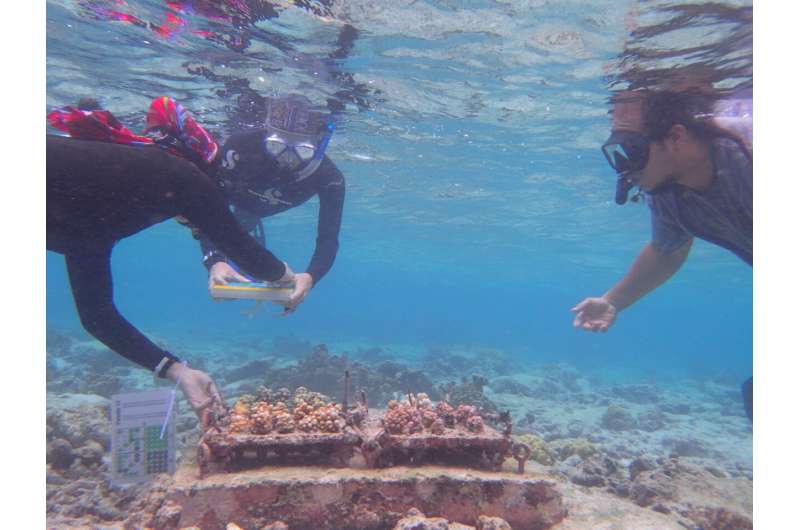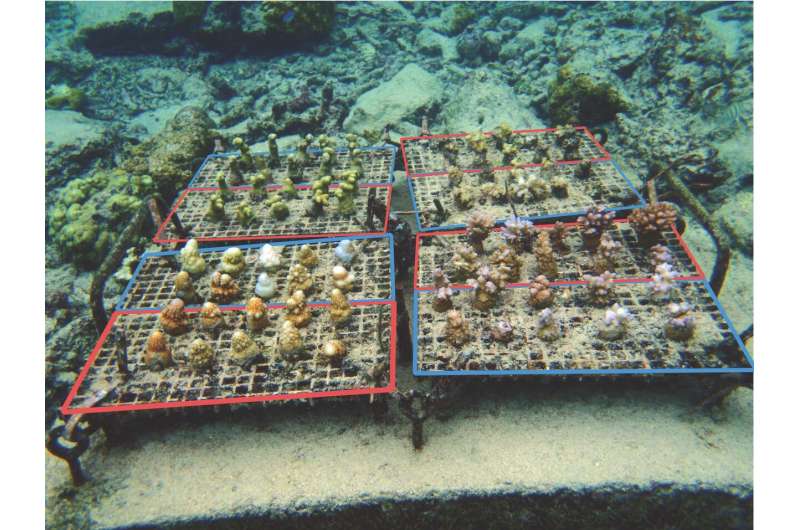May 7, 2019 report
Naturally heat-resilient corals transplanted to nurseries survive El Nino bleaching event

A pair of researchers with Stanford University has found that some naturally heat-resistant corals were able to survive relocation, even after an El Nino warming event. In their paper published in Proceedings of the National Academy of Sciences, Megan Morikawa and Stephen Palumbi describe their study of ways to prevent the coral loss and what they found.
As the planet continues to heat up due to continued emission of greenhouse gases, the oceans continue to warm, as well. One of the known impacts of a warming ocean is coral bleaching, which leads to coral death. Coral bleaching occurs when water temperatures rise because it incites the coral to eject algae. Algae live in coral bony structures and actually feed the coral, which results in the development of bright colors. Without the algae, the color erodes as the coral starves to death. Prior research has shown that such bleaching is responsible for the death of 80 percent of the reefs in the Caribbean and approximately half of Australia's Great Barrier Reef. In this new effort, the researchers looked at a possible way to save coral from disappearing entirely from the world's oceans—transplanting naturally heat-resistant coral to other locations.
Prior research has shown that some coral can withstand warmer temperatures. But it is unclear whether individual specimens within a species or group are resistant, or entire species. Also unknown is whether the species of algae play a role in the resistance, or if other environmental factors play a role. To learn more, Morikawa and Palumbi collected samples of known heat-tolerant coral back in 2014 and transplanted them to sites around the Samoan Islands where the coral reefs had been destroyed by hurricanes. As if on cue, an El Nino event warmed those same waters just eight months later. The researchers report that the transplanted coral survived the event.

The results suggest that transplanting heat-resistant coral could be a way to revive reefs that have already died. The researchers also acknowledge that more work is required to determine which factors might lead to the best approach to revive depleted coral reefs.
More information: Megan Morikawa, Stephen Palumbi. Using naturally occurring climate resilient corals to construct bleaching-resistant nurseries, Proceedings of the National Academy of Sciences (2019). www.pnas.org/cgi/doi/10.1073/pnas.1721415116
Journal information: Proceedings of the National Academy of Sciences
© 2019 Science X Network



















